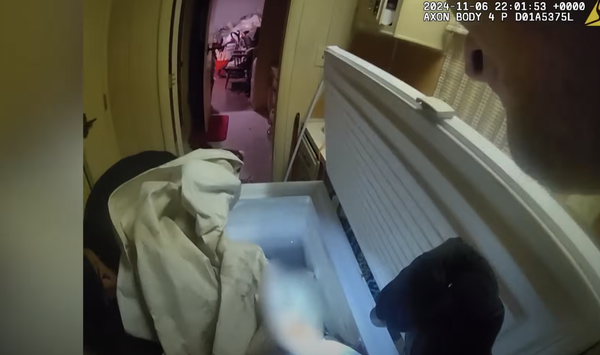
You don’t need to attend Art Basel in Miami to know that art comes in many forms. Creativity goes far beyond a canvas, from sculpture to film and even perfume. That’s what makes Art Basel the perfect place for Chanel to continue celebrating the 100th anniversary of Chanel No. 5, one of the most iconic perfumes in the world. “One hundred years is the new opportunity to celebrate Chanel No. 5, but the fragrance gets our attention every year,” says Chanel In House Perfumer and Creator Olivier Polge.
The celebration kicked off at Art Basel on December 1 with a drone light show at Faena Beach. Dubbed No. 5 The Right Number, the show paid homage to Gabrielle Chanel’s faith in the power of talismans. The night sky was lit up with her universe of symbols, including the double C monogram, the camellia flower and Place Vendome. “It was quite poetic in the way it appears when you don't know about all the technology behind it,” Polge says. “You had those all those little stars coming from the other side of the beach and coming in front of us, taking different shapes.”

The centennial commemoration continued with the reveal of a new sculptural installation, Five Echoes, a collaboration between Chanel and artist Es Devlin that was inspired by Chanel No. 5. Open to the public through December 21, Five Echoes temporarily turns Miami Design District’s Jungle Plaza into a forest with a sculptural labyrinth at its center, animated by light and sound. The multi-sensory installation is meant to be a synthetic interpretation of Chanel No. 5. After it closes, the forest of over 1,000 trees and plants will be replanted in parks across Miami-Dade County.
To help bring her vision to life, Devlin spoke with Polge about the perfume and its rich history. “She had this maze in her mind and she was trying to anchor it in something true,” Polge says. “When she was developing ideas, she was asking me questions about No. 5, about Gabrielle Chanel. There is something meaningful in everything she does; all the trees that she planted is a reference to what maybe surrounded Gabrielle Chanel in her childhood. Going from all those impressions to sometimes very technical aspect of perfumes, she asked me about how we are able to analyze and see the perfume by each molecule.”

Gabrielle Chanel grew up in the Abbey of Aubazine in the heart of France, known for its dense forest and wild landscape, which Five Echoes honors. Chanel No. 5 incorporates the essences of more than 20 plants, which is also why this nod to nature was important. Labyrinths have their origins in ancient Greece as a dance, connecting humans with the earth. Five Echoes engages sight, smell and sound as people make their way through the five concentric paths of the labyrinth. Devlin chose the labyrinth as a reminder that we are symbiotically linked to the earth, pointing to the importance of sustainability.
Devlin collaborated with Polge on the light and sound in the installation. The soundscape uses the two methods used in the laboratory to analyze a scent: a gas chromatography molecular weight analysis and the human sense of smell. “There is something interesting with all this correspondence,” Polge says. “Each smell can relay to sounds, to colors. There is also the link between technology and nature. It's very rich.”

This isn’t the first time that Devlin and Polge have worked together. They initially teamed up in 2016 to create a new Chanel fragrance that existed for only five days in southeast London when Chanel commissioned Mirror Maze, a mirrored labyrinthine sculpture that explored the link between scent and memory. “Sometimes, with perfumes, you think that you don't remember something and just by the smell, it opens the door and creates a link with certain parts of your memory and Mirror Maze was about that idea,” Polge says. “That was interesting since I was coming up with a new interpretation of No. 5 that plays with the identity of the perfume.”
The collaborations between Devlin and Polge illustrate how our interpretation of scents can evolve over time, much like the 100 years that Chanel No. 5 has existed. “I think that you always smell perfume depending on what surrounds you,” Polge says. “Like Chanel No. 5, in some ways, with the passing of time, the perfume becomes more and more special. There are almost no other perfumes that were created at the time and I think that the singularity of No. 5 is growing as years pass.”

Surely the next 100 years of Chanel No. 5 will inspire the fashion house as much as the first centennial did. “I always say that No. 5 is the grammar of our style,” Polge says. “Even the perfumers before me, we always have been creating fragrances with No. 5 in the back of our mind because it expresses a lot of our style. One of the most important [elements] is a certain part of abstraction in our scent. We never create single note fragrances; there is always this idea of construction because this construction brings some mysterious aspect in our fragrance. On a more down to earth aspect, we often work with flowers. And all that is because of Chanel No. 5.”







